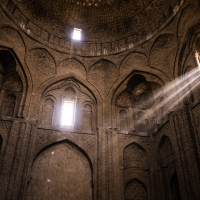Celebration of Guru Rinpoche in Rangtang County, Sichuan – China

Monks await the entrance of the Dancers during the festival celebrating the Eight Manifestations of Guru Rinpoche

Masked ‘Devil’ Dances are performed by the young lamas and students attending the monastery and buddhist school

Throwing paper Tibetan praying flags into the wind is one of the most popular ritual activities among Tibetans, and is performed to increase well-being or good luck.

More affluent parents arrange more ‘luxurious’ accommodation for their sons, while attending the school to become lamas

The Eight Manifestations of Guru Rinpoche are sitting in line receiving the different dancers who performed during the day
Padmasambhava (lit. “Lotus-Born”), also known as Guru Rinpoche, was an 8th-century Indian Buddhist master. Although there was a historical Padmasambhava, nothing is known of him apart from helping the construction of the first Buddhist monastery in Tibet at Samye, and shortly thereafter leaving Tibet due to court intrigues.
(more…)
Footprints #1
Kashan (Persian: کاشان, also Romanized as: Kāshān) is a city in Isfahan province. At the 2006 census, its population was 248,789, in 67,464 families.
The etymology of the city name comes from the Kasian, the original inhabitants of the city, whose remains are found at Tapeh Sialk dating back 9,000 years; later this was changed to “Kashian”, hence the town name. Between the 12th and the 14th centuries Kashan was an important centre for the production of high quality pottery and tiles. In modern Persian, the word for a tile (kashi) comes from the name of the town.
Source: Wikipedia






